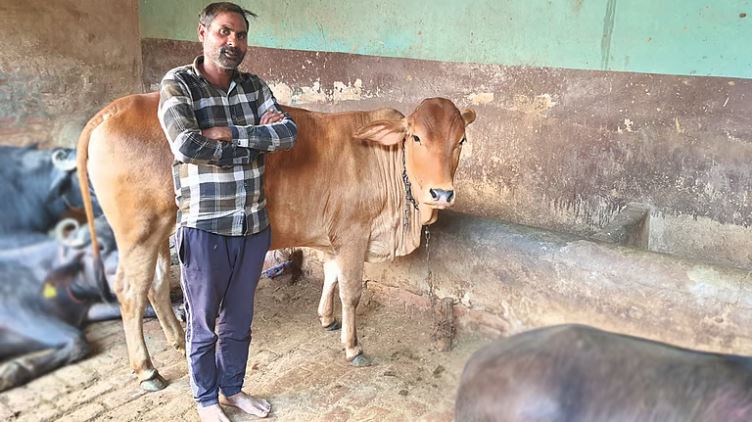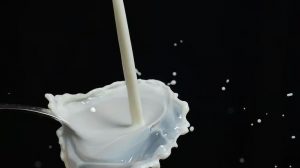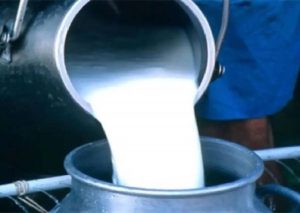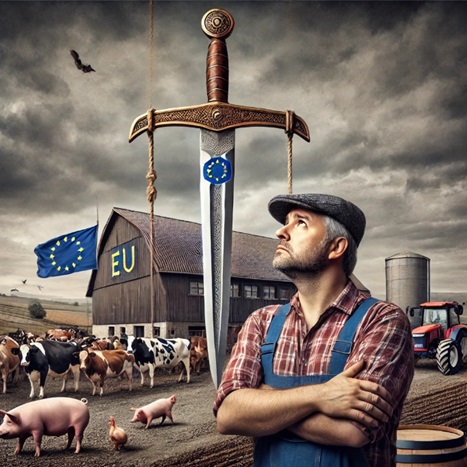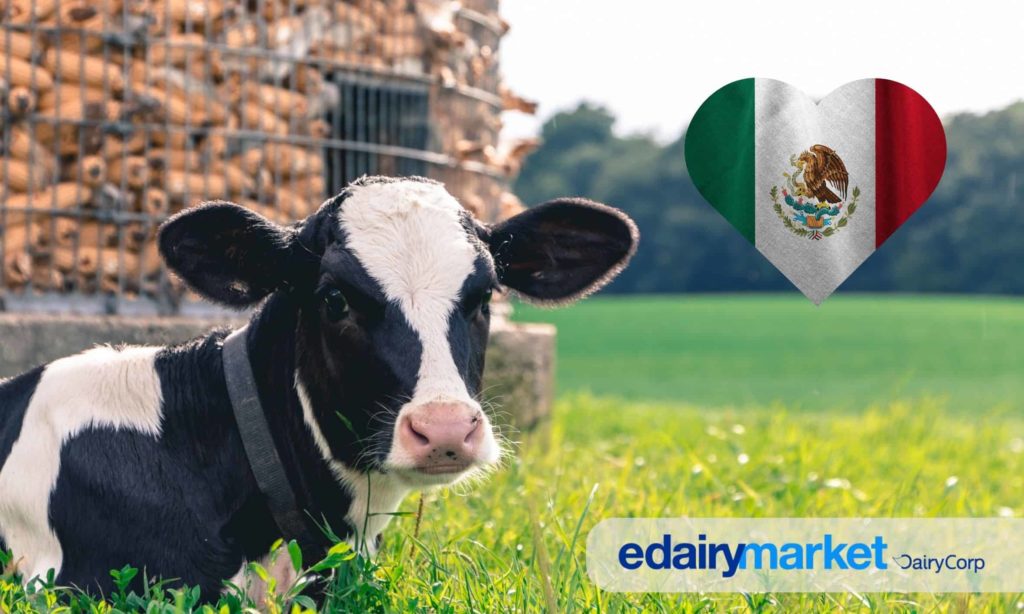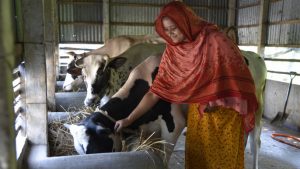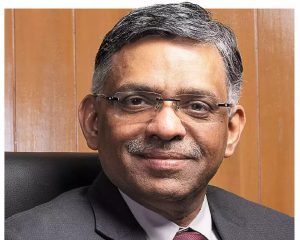
Sexed semen technology can revolutionise India’s dairy sector. But its impact on biodiversity must not be ignored.
Ravindra Mawi’s eyes light up as he talks about Lakshmi. After all, the cow is more than just a source of milk for Mawi—she promises a prosperous future for the 36-year-old dairy farmer from Uttar Pradesh’s Fatehpur Matnoura village, who now has access to the cutting-edge sexed semen technology that guarantees a 90 per cent chance of delivering female calf. On March 16, 2025, Lakshmi was artificially inseminated with sexed semen.
The technology is a beacon of hope for small farm households like Mawi’s, whose economic well-being is determined by the productivity of livestock. While dairy cows yield a regular income through milk production, a male calf or bull is considered a burden since mechanisation has replaced draught power in agriculture. Farmers Down To Earth (DTE) spoke to in Uttar Pradesh say that the cost of rearing and maintaining a cattle ranges between Rs 4,000 and Rs 10,000 a month. So they usually abandon the bulls, though some keep the male buffaloes as they can be sold for slaughter. “Nobody wants a male. You would not find a bull in any home here,” says dairy farmer Bhim Dharamvir Singh of Fatehpur Matnoura village. Singh says the technology is a boon for farmers like him. In June last year, he got the artificial insemination of his cow done using sexed semen. The calf will be able to produce milk after two years, doubling his income.
Small wonder, then, that gender selection, which raises ethical concerns in human societies due to potential for disrupting natural sex ratios and causing societal imbalances and has been declared illegal in many countries including India, is now being touted as the cure to the stray cattle menace and to revolutionise India’s milk production.
A short 3.5 km drive from the Fatehpur Matnoura village in Hapur district is the Babugarh Deep Frozen Semen (DFS) production centre, the ground zero for making this high-end technology accessible to scores of farmers like Mawi. Set up in 2019 by Uttar Pradesh’s Livestock Development Board, the centre has 204 bulls. But semen for sexsorting is harvested only from 54 bulls with high genetic merit. The centre also has a laboratory run by a US-based company, American Breeding Services (ABS). Here the semen doses are processed to inactivate the male chromosome and churn out straws containing up to 90 per cent female chromosomes.
Uttar Pradesh is among the five states in the country where such production centres have been set up at government semen stations—the other centres are in Gujarat, Madhya Pradesh, Tamil Nadu and Uttarakhand. Additionally, there are three private semen stations that produce sexed semen doses from indigenous and crossbred cows, as per information given by Union Minister of State of Fisheries, Animal Husbandry and Dairying S P Singh Baghel, in a written reply in Lok Sabha on March 11. As of February 11, these eight centres have produced 11.7 million sexed semen doses from high genetic merit bulls, including those of indigenous breeds, which have been distributed to 342,000 farmers across the country, shows the ministry data.
The production of sexed semen in India is primarily carried out by using two patented technologies developed by two US-based companies—ABS and Sexing Technologies—and has gained traction in the last few years after the Union government adopted it as a programme in 2018 under the Rashtriya Gokul Mission that aims to boost growth in milk production.

The technology
Sperms, or the reproductive cells in the semen that lead to the fertilisation of an egg allowing conception, contain both X and Y chromosomes. When the egg, which contains X chromosome, receives another X chromosome from the sperm, a female is born. Thus conventional artificial insemination offers a 50 per cent chance of conceiving a male or female. Both the patented sexed semen technologies work by following a basic method of separating the X and Y chromosomes present in the sperm and use a special dye that colours or stains the chromosomes, which is then subjected to a UV (ultraviolet) laser beam. The dye and the blue fluorescence highlights the chromosomes so scientists can differentiate and sort them. The Y chromosomes are then inactivated.
Following this, ABS uses a technology in which the inactivated Y chromosomes are collected in the straw along with the active X. In the technology used by Sexing Technologies, the chromosomes are passed through an electromagnetic field and are separated using variations in their surface charges. The inactivated Y chromosomes are then discarded. In both the technologies, the semen, which contains over 90 per cent more X chromosome-based sperms, is collected in a straw, stored at -196°C and then used for artificial insemination as and when required. “Each straw contains 2.6 million sperms and the entire process of sorting takes about six hours,” informs Sagar Saraswat, laboratory manager of Babugarh DFS production centre. K K Tyagi, deputy director at the centre, says the aim of promoting sexed semen in India is threefold: to increase cattle produc-tivity, reduce unnecessary expenditure of farmers and lower stray cattle numbers.
The average cost of sexed semen in India varies from Rs 1,000 to Rs 2,200 per insemination, depending on factors like breed and pedigree of the bull used for producing the semen, scientists tell DTE. But to promote its adoption among farmers, various state governments are offering it at a subsidised rates.
The Uttar Pradesh government, for instance, purchases the sexed semen from ABS at Rs 766 per straw and sells to farmers at a subsidised cost of Rs 100. The Rs 666 subsidy is borne by both the Union and state governments in a 50:50 ratio. Haryana, till last year, provided one semen straw at a subsidised rate of Rs 200 to farmers, informs a doctor at a government veterinary hospital in Hisar. By comparison, conventional semen costs farmers Rs 30, he says.
To bring down production cost by developing indigenous technologies, the Union government in 2024 roped in apex institutes. The list includes Indian Institute of Technology (IIT), Delhi, IIT, Madras, Lala Lajpat Rai University of Veterinary and Animal Sciences (LUVAS) in Hisar, Haryana, and the Indian Veterinary Research Institute under the Indian Council of Agricultural Research (ICAR-IVRI). Under one of the projects, scientists have been asked to develop “labelled-free technology”, that would produce sexed semen without using dye.
“Scientists have raised concerns that the use of dye could potentially damage the DNA, and thus in the long run the technology could harm the genetics of the animal,” says Aman Kumar, senior scientist, LUVAS, Hisar. Kumar is involved in the project of developing labelled-free technology that will be ready by October 2026.

Concerns galore
Last year, the Haryana government temporarily stopped a sexed semen project after farmers complained of conception failure. Researchers with ICAR-IVRI have carried out a study that explains the reason. While sex-sorted semen guarantees a 90 per cent chance of delivering female calves, the conception rate with the technology is just around 30 per cent. This means, the chances of conception with sexed semen lowers by 10-15 per cent when compared with conventional artificial insemination, they write in International Journal of Veterinary Sciences and Animal Husbandry published in 2024. This could be because sexed semen contains 2 million sperms per dose compared to conventional semen that contains 20 million sperms, the researchers say.
V K Munjal, technical head at Hisar Bovine Sperm Station and Research Centre, a private facility that produces and distributes 5 million doses of conventional bull semen annually, highlights another reason. “Collecting semen from the bull and bringing down its temperature to 4°C, where the metabolic energy of the sperms is reduced to protect their vitality, takes us about 20 minutes. But sex-sorting is a time-consuming process during which the semen remains in the machine at room temperature for about two hours. This affects the sperms’ vitality,” Munjal says.
There are also concerns that the technology may lead to a systematic extinction of the bull by impacting its diversity. The country now has roughly one male cattle for every 13 female cattle, as per the 20th Livestock Census released in 2019.
An officer with the Uttar Pradesh government, who does not wish to be identified, tells DTE that discussions are going on to use only sexed semen for artificial insemination. The 10 per cent males born through such process can be purchased by the government from the farmer and kept at the semen station. The idea is to breed them for semen production, says the official.
“This will simply kill our biodiversity in cattle. India is a signatory to the biodiversity convention which means we assure that for every animal we have the requisite biodiversity. But through this technology, we are promoting fewer breeds. Using a single animal for producing thousands and thousands of calves is akin to cloning and is against the principles of biodiversity,” says Selvarajan Rajeshwaran, veterinarian and livestock policy expert in Bengaluru.
D K Sadana, former head of animal genetic resources at ICAR-National Bureau of Animal Genetic Resources in Karnal, Haryana, suggests using a combination of bulls to ensure minimal impact on biodiversity. He also recommends using more indigenous breeds than crossbred or exotic as a safeguard measure.
You can now read the most important #news on #eDairyNews #Whatsapp channels!!!
🇮🇳 eDairy News ÍNDIA: https://whatsapp.com/channel/0029VaPidCcGpLHImBQk6x1F
